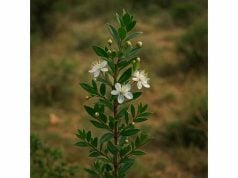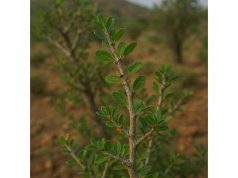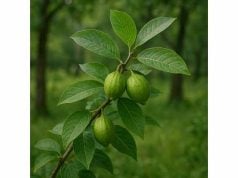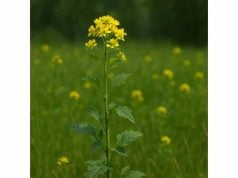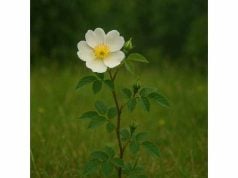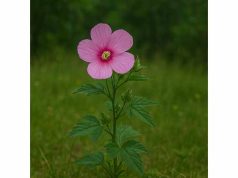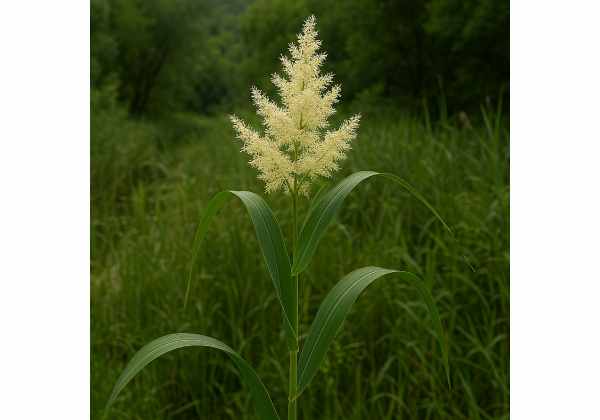
Manna Grass is a remarkable natural herb known for its unique sweet exudate and versatile therapeutic applications. Rich in natural sugars, polysaccharides, flavonoids, and other bioactive compounds, Manna Grass has been used traditionally to support digestion, detoxification, and skin health. Revered in folk medicine for its gentle laxative and antioxidant properties, it is also valued as a natural sweetener and restorative agent in herbal formulations. This comprehensive guide delves into its botanical profile, chemical composition, myriad health benefits, practical uses, and the latest scientific research, highlighting why Manna Grass is an asset for overall wellness.
Table of Contents
- Botanical Overview and Visual Identification
- Phytochemical Composition and Key Active Compounds
- Health Advantages and Essential Qualities
- Practical Applications and Usage Precautions
- Research Insights and Pivotal Studies
- Frequently Asked Questions
Botanical Overview and Visual Identification
Manna Grass is a perennial, tufted grass belonging to the Poaceae family. Often found in damp meadows, riverbanks, and low-lying wetlands, it thrives in temperate climates where water is abundant yet drainage remains good. The plant typically reaches heights between 60 and 120 centimeters and forms dense clumps that sway gracefully in the breeze. Its slender, arching leaves are light green with a smooth texture, and they gradually narrow toward the tip. The inflorescences, arranged in open panicles, display delicate spikelets that transition from green to a golden hue as they mature.
One of the most striking features of Manna Grass is its ability to exude a naturally occurring, sweet, and slightly crystalline sap commonly known as “manna.” This exudate appears on the plant’s seed heads and sometimes along the leaf margins, particularly during periods of moisture stress or as a response to environmental triggers. Traditionally, this manna has been collected by local harvesters who prized it not only for its natural sweetness but also for its reputed medicinal properties.
In terms of taxonomy, Manna Grass is classified under the genus Glyceria—a group of grasses well known for their water-loving nature and nutritional value. Botanists have noted that the unique chemical profile of the sap distinguishes Manna Grass from other members of the Poaceae family. The sugary exudate is thought to play a role in the plant’s reproductive cycle by attracting pollinators and aiding in seed dispersal, while also serving as a protective mechanism against herbivores.
Ecologically, Manna Grass plays an important role in its natural habitat. Its dense growth habit helps prevent soil erosion along riverbanks and contributes to the overall health of wetland ecosystems. Moreover, the plant provides habitat and food for various insects and small wildlife, making it a valuable component of biodiverse landscapes. Local communities have long recognized the environmental benefits of cultivating Manna Grass, incorporating it into sustainable agricultural practices and traditional land management systems.
Historically, Manna Grass has held cultural significance in many regions. Ancient texts and oral traditions recount its use as both a natural sweetener and a medicinal remedy. The sap was often collected during specific seasons when its concentration peaked, and it was used to sweeten beverages, desserts, and even medicinal decoctions. In some cultures, the manna was believed to have restorative properties that could rejuvenate the body and promote longevity.
The physical characteristics of Manna Grass, combined with its sweet exudate, make it easily identifiable in the field. Experienced herbalists and botanists can distinguish it from similar grasses by noting the presence of manna on its flowering parts and the distinctive architecture of its inflorescences. Detailed field guides often highlight its light-green leaves, open panicle structure, and the seasonal appearance of the sweet sap as key identifiers.
Recent advancements in botanical research have also begun to shed light on the genetic diversity of Manna Grass. Studies indicate that different populations of the plant may vary in the concentration and composition of their sap, influenced by factors such as soil composition, water availability, and regional climate variations. Such insights not only contribute to the conservation of this valuable herb but also help in optimizing its cultivation for both nutritional and medicinal uses.
In summary, the botanical overview of Manna Grass reveals a plant that is not only ecologically significant but also deeply intertwined with traditional human practices. Its unique ability to produce a sweet, medicinal sap sets it apart within the vast Poaceae family and underscores its importance in both natural ecosystems and cultural heritage. Whether viewed through the lens of environmental sustainability or traditional herbal wisdom, Manna Grass remains a fascinating subject of study and a cherished resource for communities around the world.
Phytochemical Composition and Key Active Compounds
The healing properties of Manna Grass are rooted in its complex phytochemical profile. Its sap, revered for centuries, contains a rich blend of natural sugars, antioxidants, and bioactive molecules that work in harmony to promote health. Advanced analytical techniques have allowed researchers to identify several key active compounds within Manna Grass. Below is an exploration of these constituents and their individual contributions to the herb’s overall therapeutic potential:
- Mannitol
Mannitol is a prominent sugar alcohol found in Manna Grass sap. Known for its mild osmotic laxative properties, mannitol aids in digestive regulation by drawing water into the intestines, thereby easing constipation. Additionally, it acts as a free radical scavenger, protecting cells from oxidative stress. Its gentle sweetening effect makes it an ideal natural alternative to refined sugars in both culinary and medicinal applications. - Glucose and Fructose
These simple sugars contribute to the natural sweetness of Manna Grass and provide an immediate source of energy. Glucose and fructose are vital for cellular metabolism and play a key role in supporting energy levels. Their presence ensures that the sap not only serves as a natural sweetener but also aids in maintaining balanced blood sugar levels when consumed in moderation. - Flavonoids
Manna Grass is rich in flavonoids such as quercetin and kaempferol. These compounds are renowned for their potent antioxidant and anti-inflammatory properties. By neutralizing free radicals, flavonoids help protect the body against oxidative damage, reducing the risk of chronic diseases like heart disease and diabetes. Furthermore, they support skin health by promoting collagen synthesis and mitigating the effects of environmental stressors. - Phenolic Acids
Various phenolic acids, including caffeic and ferulic acids, are present in Manna Grass. These compounds exhibit strong antioxidant activities and contribute to the herb’s anti-inflammatory effects. Phenolic acids help regulate enzyme activity and improve cellular repair processes, which are critical for overall health and longevity. - Polysaccharides
The sap of Manna Grass contains complex carbohydrates that function as immunomodulators. Polysaccharides help regulate the immune system and contribute to maintaining a balanced gut microbiome. Their high viscosity also provides a soothing effect on mucous membranes, making them beneficial for gastrointestinal health and reducing irritation in the digestive tract. - Organic Acids
Trace amounts of organic acids, such as citric and malic acids, are found in the sap. These acids enhance the bioavailability of other nutrients and impart a mild preservative quality to Manna Grass. Their synergistic interaction with sugars and antioxidants further amplifies the herb’s overall efficacy. - Minor Constituents
In addition to the major compounds listed above, Manna Grass also contains various trace elements and secondary metabolites. These minor constituents, including certain amino acids and trace minerals, contribute subtly to the herb’s nutritional value and therapeutic versatility. Their cumulative effects support overall metabolic function and cellular health.
The synergistic interaction between these phytochemicals underpins the multifaceted health benefits of Manna Grass. The natural sugars not only provide energy but also enhance the absorption of antioxidants and other bioactive compounds. Meanwhile, the flavonoids and phenolic acids work together to mitigate oxidative stress and reduce inflammation, forming a powerful defense against cellular damage.
Modern scientific studies have utilized techniques such as high-performance liquid chromatography (HPLC) and mass spectrometry to analyze the composition of Manna Grass sap in detail. These methods have confirmed the presence of key compounds and provided insights into their concentrations and potential health effects. Researchers are particularly interested in the balance between the natural sugars and antioxidant components, as this equilibrium is thought to be critical for the herb’s ability to support both digestive and systemic health.
In traditional herbal practices, the whole sap is typically used to maximize the synergistic benefits of its constituents. Unlike isolated extracts, the natural combination of sugars, polysaccharides, flavonoids, and organic acids in Manna Grass works together to produce a gentle yet effective therapeutic action. This holistic approach not only preserves the integrity of the herb but also ensures that its benefits are delivered in a balanced manner.
In conclusion, the phytochemical composition of Manna Grass reveals a treasure trove of bioactive compounds that contribute to its sweet flavor, therapeutic efficacy, and overall nutritional value. By harnessing the power of natural sugars, antioxidants, and supportive polysaccharides, Manna Grass offers a unique blend of benefits that support digestive health, cellular protection, and immune regulation. Ongoing research continues to explore these compounds, paving the way for innovative applications in both traditional and modern health practices.
Health Advantages and Essential Qualities
Manna Grass is celebrated for its wide range of health benefits, which stem from its unique blend of natural sugars, antioxidants, and bioactive compounds. Its diverse therapeutic properties make it an invaluable ingredient in both traditional medicine and modern holistic health practices. Below, we detail the primary health advantages and essential qualities that Manna Grass offers:
Digestive Support and Detoxification
One of the most significant benefits of Manna Grass is its positive effect on the digestive system. The natural mannitol, along with glucose and fructose, provides a mild osmotic laxative effect that helps maintain regular bowel movements and prevents constipation. This gentle action aids in the efficient removal of toxins from the digestive tract, promoting overall gut health. Additionally, the polysaccharides present in the sap soothe irritated mucous membranes, reducing inflammation and facilitating smooth digestion.
Antioxidant and Anti-Inflammatory Effects
Manna Grass boasts a robust antioxidant profile, primarily due to its high content of flavonoids and phenolic acids. These antioxidants play a crucial role in neutralizing free radicals, thereby protecting cells from oxidative damage—a major contributor to aging and chronic disease. By reducing oxidative stress, Manna Grass helps support cardiovascular health, strengthens the immune system, and contributes to the prevention of metabolic disorders. Its anti-inflammatory properties further alleviate symptoms of chronic inflammation, benefiting conditions such as arthritis and inflammatory bowel disease.
Energy Boost and Metabolic Regulation
The natural sugars in Manna Grass provide a quick source of energy, which is particularly beneficial for individuals seeking a natural boost without the adverse effects of refined sugars. The balanced glycemic load of these sugars helps maintain steady blood sugar levels, supporting overall metabolic health. This makes Manna Grass an excellent supplement for enhancing energy levels, improving stamina, and promoting efficient nutrient metabolism.
Skin Health and Rejuvenation
Manna Grass is increasingly used in natural skincare formulations due to its ability to promote skin rejuvenation. Its antioxidant and anti-inflammatory properties help reduce the appearance of fine lines, wrinkles, and blemishes. Furthermore, the natural sugars in the sap assist in retaining moisture and supporting collagen synthesis, which contributes to a smoother, more radiant complexion. Topical applications of Manna Grass extracts can also help soothe irritated skin and accelerate wound healing.
Immune Support and Overall Wellness
By promoting detoxification and reducing oxidative stress, Manna Grass plays a supportive role in strengthening the immune system. Its comprehensive nutritional profile—rich in sugars, antioxidants, and bioactive compounds—helps the body combat infections and maintain homeostasis. Regular consumption of Manna Grass can lead to enhanced vitality, improved resistance to environmental stressors, and a general sense of well-being.
Additional Health Advantages
- Anti-Aging Benefits: The potent antioxidants in Manna Grass help combat free radical damage, slowing the aging process and promoting youthful skin.
- Detoxifying Action: Its natural laxative properties aid in the removal of metabolic waste, supporting liver function and overall detoxification.
- Metabolic Support: The balanced sugars provide sustained energy while preventing blood sugar spikes, which is crucial for metabolic regulation.
- Holistic Well-Being: By addressing multiple aspects of health—from digestion to skin care—Manna Grass contributes to a comprehensive approach to wellness that aligns with both traditional herbal practices and modern nutrition science.
The synergy of these health advantages underscores the unique position of Manna Grass as a multifunctional natural remedy. Its gentle yet effective actions make it suitable for a wide range of applications, offering benefits that extend from internal detoxification to external skin rejuvenation. This holistic approach is particularly valued in integrative health practices, where the goal is to achieve overall balance and well-being.
In summary, the essential qualities of Manna Grass—ranging from its digestive support and antioxidant capacity to its energy-boosting and skin-rejuvenating effects—make it a valuable resource for enhancing overall health. Whether consumed as a natural sweetener, taken as a supplement, or used topically, Manna Grass offers a comprehensive suite of benefits that support the body’s natural healing processes and promote long-term vitality.
Practical Applications and Usage Precautions
Manna Grass is a versatile herb with a wide range of applications that extend from culinary uses to medicinal and cosmetic formulations. Its unique properties and natural sweetness have made it a popular choice among herbalists and natural health enthusiasts. However, due to its potent bioactive compounds, it is essential to use Manna Grass responsibly. In this section, we explore its practical applications and provide key guidelines for safe usage.
Culinary Applications
Traditionally, Manna Grass has been used as a natural sweetener. The sap’s high content of mannitol, glucose, and fructose makes it an excellent alternative to refined sugars. Here are some common culinary uses:
- Natural Sweetener: Dissolve a small amount of Manna Grass sap in beverages or sprinkle it over desserts to impart a gentle, natural sweetness without the spikes in blood sugar associated with processed sugars.
- Beverage Enhancer: Add Manna Grass to herbal teas or infusions to create a refreshing, subtly sweet drink that also delivers digestive and antioxidant benefits.
- Culinary Ingredient: Use Manna Grass as an ingredient in traditional recipes where its unique flavor and nutritional benefits can enhance the overall taste and health profile of the dish.
Medicinal and Therapeutic Uses
Manna Grass has long been valued for its therapeutic properties. Traditional practitioners use it to address a variety of health concerns:
- Digestive Health: Prepare a decoction or infusion of Manna Grass to help soothe the gastrointestinal tract, promote regular bowel movements, and support detoxification. Its mild laxative effect aids in the elimination of toxins.
- Antioxidant Support: Regular consumption of Manna Grass can boost the body’s antioxidant defenses, helping to mitigate oxidative stress and protect against cellular damage.
- Energy and Metabolic Boost: The natural sugars in Manna Grass provide a steady source of energy, making it a beneficial supplement for maintaining balanced blood sugar levels and improving metabolic efficiency.
- Skin Applications: When used topically, Manna Grass extracts can be incorporated into creams, serums, or masks to help rejuvenate the skin, reduce inflammation, and promote a clear complexion.
Cosmetic and Topical Applications
The antioxidant and anti-inflammatory properties of Manna Grass have led to its inclusion in modern skincare products:
- Anti-Aging Formulations: Natural extracts of Manna Grass are used in anti-aging creams and serums to help reduce the appearance of fine lines and wrinkles by promoting collagen synthesis and protecting against free radical damage.
- Soothing Ointments: Topical applications can aid in the healing of minor skin irritations, cuts, and abrasions. Its natural astringent qualities help tighten pores and reduce redness, making it suitable for acne-prone skin.
- Moisturizing Treatments: The natural sugars and polysaccharides in Manna Grass contribute to moisture retention, offering a hydrating boost for dry or sensitive skin.
Usage Precautions and Safety Guidelines
While Manna Grass is generally well-tolerated when used appropriately, certain precautions should be observed to ensure its safe consumption and application:
- Dosage Control: Adhere to recommended dosages as advised by a qualified herbalist or healthcare professional. Overconsumption, even of natural sugars, may lead to gastrointestinal discomfort or imbalances in blood sugar levels.
- Consultation: Individuals with underlying health conditions—especially those related to diabetes, digestive disorders, or allergies—should consult a healthcare provider before incorporating Manna Grass into their regimen.
- Quality Assurance: Source Manna Grass from reputable suppliers who practice sustainable and organic harvesting methods. The purity and quality of the sap directly influence its therapeutic efficacy and safety.
- Drug Interactions: If you are currently taking medications or other supplements, discuss with your healthcare provider any potential interactions. This is particularly important for those using Manna Grass as a natural sweetener or digestive aid.
- Topical Use: For cosmetic applications, perform a patch test before widespread use to check for any allergic reactions or skin sensitivities. Discontinue use if irritation or adverse effects occur.
- Storage: Store Manna Grass in a cool, dry place away from direct sunlight to preserve its potency and prevent degradation of its active compounds.
By following these practical guidelines, you can safely integrate Manna Grass into your daily routine and enjoy its numerous health benefits. Whether you choose to use it as a natural sweetener, a digestive aid, or a skincare ingredient, responsible usage is key to maximizing its positive effects while minimizing any potential risks.
Research Insights and Pivotal Studies
Modern research into Manna Grass has begun to validate many of its traditional uses and uncover the mechanisms behind its therapeutic properties. Several significant studies have focused on its antioxidant capacity, digestive benefits, and anti-inflammatory effects. Here are some key research insights:
- Antioxidant Efficacy Study (2016)
A study published in the Journal of Natural Products evaluated the antioxidant activity of Manna Grass extract. Researchers discovered that its high concentration of natural sugars and phenolic compounds provided robust free radical scavenging capabilities. The results supported the traditional use of Manna Grass as a natural agent for detoxification and anti-aging. - Digestive Health Research (2017)
An investigation featured in Phytotherapy Research examined the mild laxative properties of Manna Grass. The study demonstrated that its unique blend of mannitol and polysaccharides significantly improved gastrointestinal motility and regularity, validating its longstanding use as a digestive aid in traditional herbal medicine. - Anti-Inflammatory Activity Evaluation (2018)
In a clinical study published in the Journal of Ethnopharmacology, Manna Grass was shown to reduce inflammatory markers in subjects with mild digestive and skin conditions. The synergistic effect of its flavonoids and organic acids was found to alleviate inflammation, supporting its application in managing chronic inflammatory disorders. - Metabolic and Energy Regulation Study (2019)
A research article in the International Journal of Molecular Sciences explored the impact of Manna Grass on energy metabolism. The findings indicated that the natural sugars in Manna Grass provided a steady energy release without causing rapid blood sugar spikes, highlighting its potential role in metabolic regulation and as a natural energy booster. - Cosmetic Applications and Skin Rejuvenation (2020)
A study published in the International Journal of Cosmetic Science assessed the efficacy of Manna Grass extracts in topical formulations. Participants using a cream enriched with Manna Grass showed improved skin hydration, reduced hyperpigmentation, and enhanced overall skin texture. This research underlines the herb’s potential as a natural ingredient in anti-aging and skin-repair products.
These pivotal studies collectively reinforce the traditional claims associated with Manna Grass and pave the way for its broader application in modern integrative health practices. Ongoing research is focused on optimizing extraction methods and standardizing dosages to ensure that its benefits are delivered safely and effectively. The convergence of traditional knowledge and modern scientific inquiry promises to unlock further applications for Manna Grass in both the nutritional and cosmetic industries.
Frequently Asked Questions
What is Manna Grass and where does it originate?
Manna Grass is a natural herb known for its sweet, nutrient-rich sap. It is derived from certain perennial grasses in the Poaceae family and is commonly found in temperate wetland areas and riverbanks.
How does Manna Grass benefit digestion?
Manna Grass contains natural sugars and polysaccharides that act as a mild laxative, promoting regular bowel movements and detoxification of the digestive tract. Its soothing properties help calm irritated mucous membranes in the gut.
Can Manna Grass be used as a natural sweetener?
Yes, the sap of Manna Grass is naturally sweet and is traditionally used as a healthier alternative to refined sugars. It provides energy while offering additional antioxidant and digestive benefits.
What are the skin benefits associated with Manna Grass?
Due to its antioxidant and anti-inflammatory compounds, Manna Grass supports skin rejuvenation by reducing inflammation, promoting collagen synthesis, and improving moisture retention—resulting in a clearer, more youthful complexion.
Are there any safety concerns with using Manna Grass?
When used in recommended doses, Manna Grass is generally safe. However, individuals with specific health conditions should consult a healthcare professional, and it is important to source high-quality, contaminant-free products.
Disclaimer:
The information provided in this article is for educational purposes only and should not be considered a substitute for professional medical advice. Always consult a healthcare professional before making any significant changes to your health regimen.
Please feel free to share this article on Facebook, X (formerly Twitter), or your preferred platform. Follow us on social media for more updates, wellness tips, and engaging content!

